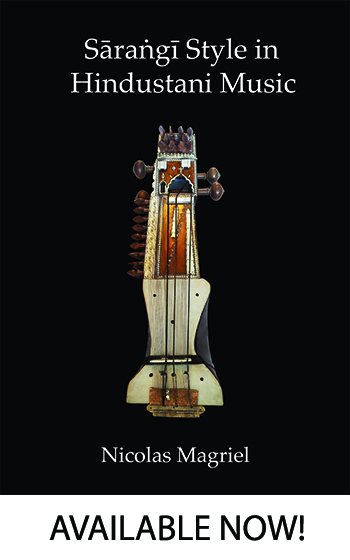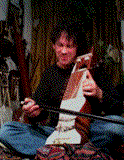Sangat, accompanying vocal music, is the sarangi's traditional public role. The best accompanists had intimate knowledge of the nuances of diverse gharana styles of khayal, thumri, and all other genres of classical vocal music. Many sarangi players say that accompanying is even more difficult than solo playing. One must often reproduce a vocalist's utterances simultaneously to listening to whatever he/she sings next. And by-and-large it is a thankless task. The social stratification of Indian art music mirrors the rigid stratification of Indian society. Vocalists will rearely converse with their accompanists in the green room, and they rarely give sarangi players time to tune their sarangis—there's just no condieration of what it means to have forty sympathetic strings to deal with. And they are fond of criticizing sarangi plasyers (often musicians with considerably more substantial pedigrees than themselves) for playing out of tune—unaware that out-of-tuneness is an inevitable consequence of not being given time to tune.
One lamentable consequence of sarangi's low status is that both archival recordings and commercial recordings of vocal music rarely mention the sarangi accompanists' names. This page is an attempt to demonstrate the beauty of sarangi accompaniment—one of the great features of twentieth century vocal music which has now nearly completely fallen by the wayside—replaced by the relentless tooting of the harmonium, a European import, originally used to accompany the hymns of Christian missionaries, a musical accessory for the shameful drive to convert the "natives".
The harmonium's poorly-tempered scale is categorically out of tune for Indian music, but it has been fondly embraced, even by the finest singers. Harmonium players are cheaper to employ than sarangi players. And they tend not to be Muslims, indeed they are often from the same educated Hindu middle-classes from which the majority of contemporary singers come, especially in Maharashtra.
For videos of sarangi accompaniment please go to the sister page for video.
Enough ranting for the moment. Our first audio tracks are an amazing recording of Ustad Bundu Khan accompanying Pandit Ram Krishna Vazabua in the 1940s and two pieces by Ustad Bade Ghulam Ali Khan accompanied by the great Ustad Bade Ghulam Sabir Khan of Ambala recorded in the early 1960s. I will add more examples of premium sangat in the weeks to come. Next are two beautiful recordings of a young Smt Girija Devi accompanied by the illustrious Pandit Gopal Mishra, my second teacher and Pandit Kissen Maharaj on tabla.Then we have a lovely recording of the great Ustad Sabri Khan, my first teacher, accompanying a very young Parvine Sultana in 1969.
Next are four mind-blowing examples of sangat by a young Pandit Ram Narayan accompanying Badi Motibai. It is said that Ram Narayan as an accompanist was like a chameleon, he could perfectly capture the nuances and mood of diverse styles of vocal music. Here we hear him playing purab ang thumri with such perfection that I had inintially thought the accompanist was either Gopal Mishra or Hanuman Prasad Mishra. When Panditji gave up accompanying, one of the real jewels of Hindustani accompaniment was lost. And it is remarkable how his solo sarangi playing reflects his illustrious personality and his wonderful solo virtuosity more than it does the wealth of vocal music which he had so beautifully accompanied.
Then we have two pieces the outstanding Bombay sarangiya Ustad Masit Khan, student of Abdul Majid Khan, accompanying Smt Kishori Amonkar in 1967, then one fantastic example of Kishoriji accompanied, many years later, by Ustad Sultan Khan. After that are three superb pieces of Pandit Gopal Mishra accompanying Krishnarao Shankar Pandit in 1970. And finally, at the end of 2015, a great recording of Pandit Ram Narayan accompanying Pandit Kumar Gandharva in the 1960s. NEW APRIL 2016: two recordings of the great Ustad Sagiruddin Khan of Calcutta accompanying the great dhrupadiya Ustad Aminuddin Dagar, and one of him accompanying Ustad Bade Ghulam Ali Khan.NEW JULY 2016: 17b—another recording of Ram Narayan accompanying Kumar Gandharva: rags Brindabani Sarang and Bhairavi.
The artists:
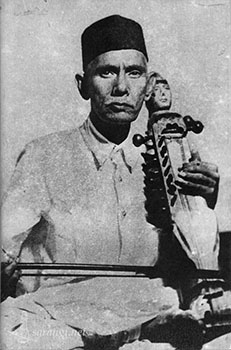

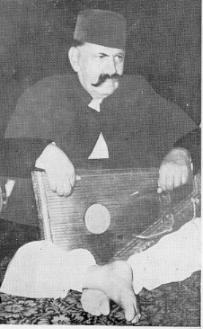
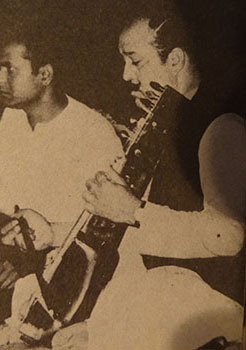
Bundu Khan Ramkrishna Vazebua Bade Ghulam Ali Khan Bade Ghulam Sabir Khan
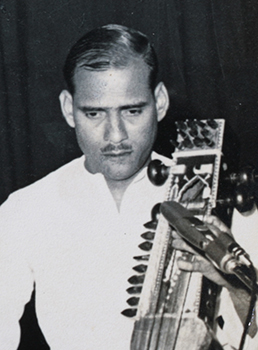
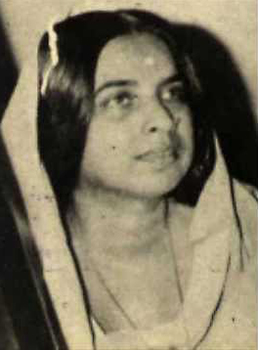
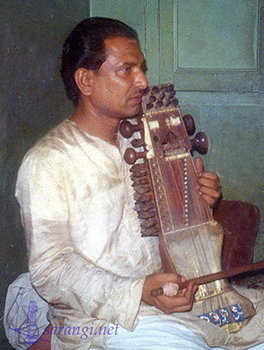
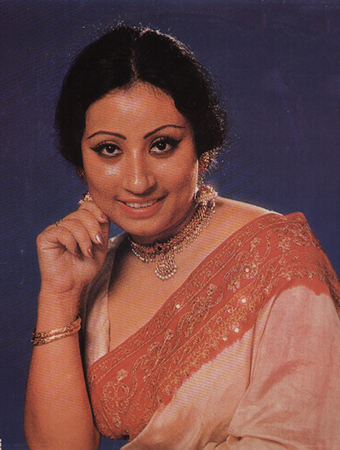
Gopal Mishra Girija Devi Sabri Khan Parvine Sultana
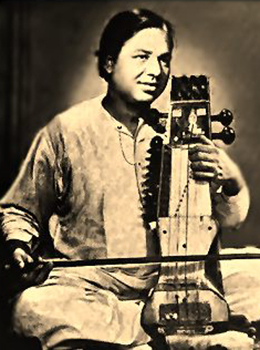
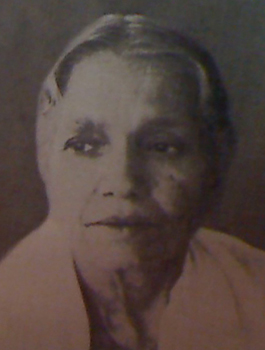
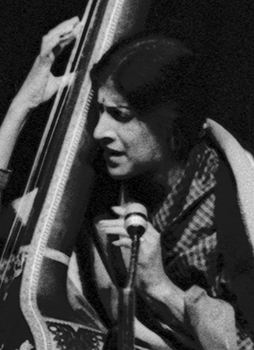
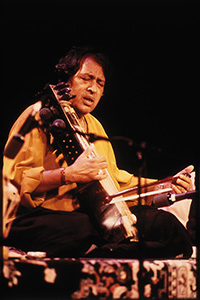
Ram Narayan Badi Motibai Kishori Amonkar Sultan Khan
(if you know of a photo of Masit Khan, please let me know!)
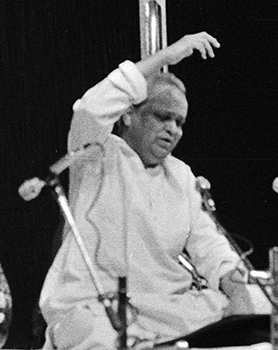
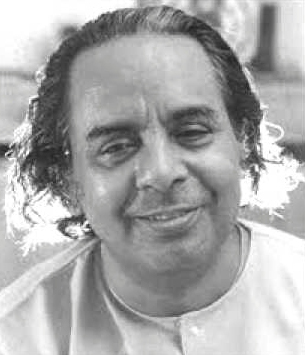
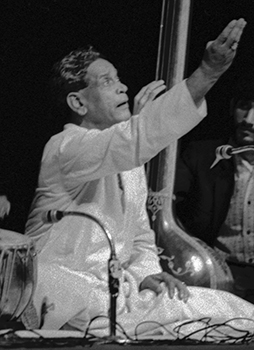
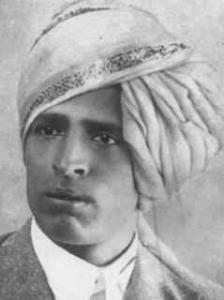
Kumar Gandharva Aminuddin Dagar Bhimsen Joshi Gajananrao Joshi
Sangat
The following player presents archival recordings of great vocalists accompanied by great but unknown sarangi players. In each of these, sadly, the people who recorded and/or the collectors who archived failed to write down the name of the sarangi player. Our first two examples are of Bhimsen Joshi (from the late 1950s) and Gajananrao Joshi. The sarangiya with Gajananrao plays in a style similar to Bundu Khan—if not the master himself, it could be Abdul Majid Khan. Superb sangat!
Sangat Unknown


